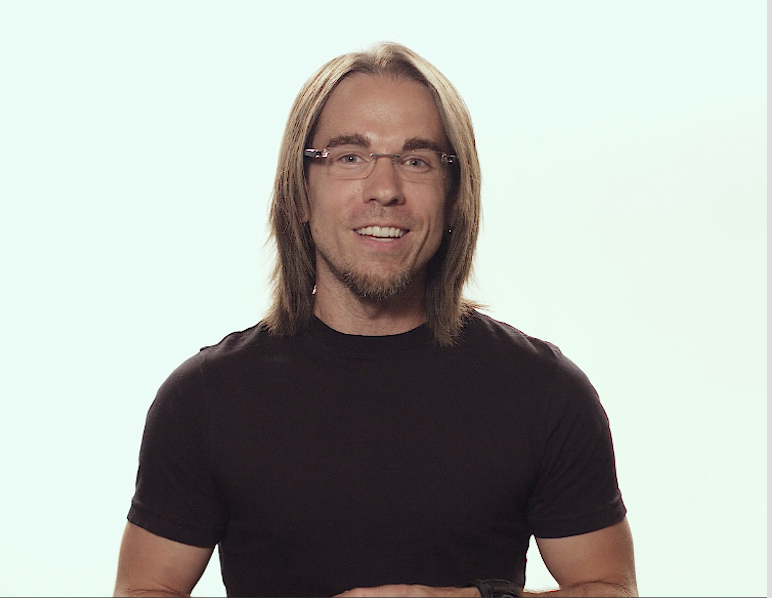Have you ever noticed how shockingly painful a paper cut can be? Very often curse words emanate as pain emerges. How is it these sorts of experiences can be so painful, yet the moment professional surfer Bethany Hamilton lost her arm to a 14-foot tiger shark she described feeling no pain at all? How is that even possible? How can an individual lose an entire appendage and not be in agonising pain?
One thing is for certain, pain is decidedly complex. Yet, what the literature helps us to distinguish is that pain relies on context, and our nervous system is constantly evaluating its environment for anything that it perceives as being potentially threatening. And when pain ultimately emerges, it’s an experience that is impossible to ignore.
Consider this: if your appendix becomes inflamed, would it not be advantageous (as a species) to have an innate system that recognises the imminent threat of an inflamed organ and to then correspondingly produce an output of pain? You better believe it. In these instances, pain acts as a conduit for communication that, if left ignored, could have disastrous consequences.
Expanding perspectives
If the only tool in your toolbox is a hammer, then everything is a nail. And if the only lens you look through is anatomical, then everything is either tight, weak, overactive or underactive. A health and wellness professional who denounces a ‘tight muscle’ or an ‘overly pronated subtalar joint’ as being the sole culprit behind an individual’s pain experience has performed an incomplete analysis.
Multiple variables, expanding beyond the optics of biomechanical and connective tissue principles, must be considered. The story of Bethany serves as a reminder that tissue damage can indeed occur without the onset of pain. In the end, understanding a client’s pain experience requires a diverse and multifaceted outlook.
A unified framework – a biopsychosocial approach
Introduced in 1977 by George Engel, the biopsychosocial model is a comprehensive and unified framework integrating a full spectrum of biological, psychological and sociocultural perspectives. Its central premise asserts that health and wellness are inextricably intertwined with biological, psychological and social factors. It’s a multilayered, multi-systems perspective which helps conceptualise why ‘stuff’ hurts.
And when we consider an individual’s pain experience, a vast matrix of biological, psychological and social ingredients is in play. For instance, think about the long-distance runner whose knee pain (bio) has become so severe they can no longer go for their after-run coffee and conversation (psychosocial) with their running group.
Fears regarding movement, of pain worsening or not going away, or fear of not being part of a peer group all heighten levels of psychological distress and social anxiety. In other words, when pain persists, the areas in life which hold the most meaning for an individual become negatively impacted by chronic pain.
The biopsychosocial model – tailored for all shapes and sizes
There’s no denying the complexities involved in working with people in chronic pain. Serving clients who experience chronic pain is much like being a tailor. A tailor considers multiple dimensions into their analysis and thought process.
Diversification is personified and driven by the uniqueness of each individual. A tailor’s objective is clear: to enter the client’s world and uncover their specific and subjective needs. The same objective holds true for health and fitness professionals. If you can enter your client’s world and understand their unique biopsychosocial needs, then you’ll have accomplished something truly special in your client’s eyes.
Admittedly, viewing pain through a biopsychosocial lens is not an easy process at first; in fact, it’s an effort-full endeavour. Just the thought of stepping outside our comfort zone can sometimes prevent us from even having the courage to get started.
But, when your commitment is to serve, the scale with which your influence can reach expands immensely. And viewing chronic pain through a three-dimensional, biopsychosocial perspective can help refine your ability to create lasting and positive reverberations for your clients.
And when challenges in your learning curve arise (which they will), remember that even amidst the waves of uncertainty, you’re interacting with another human being and not a mechanistic instrument. So be kind, be empathetic and, as often as possible, seek to understand an individual’s story from a three-dimensional perspective.
How about learning more in our ongoing education ‘Pain-Free Movement Specialist‘ with Kevin Murray and Anthony Carey?








